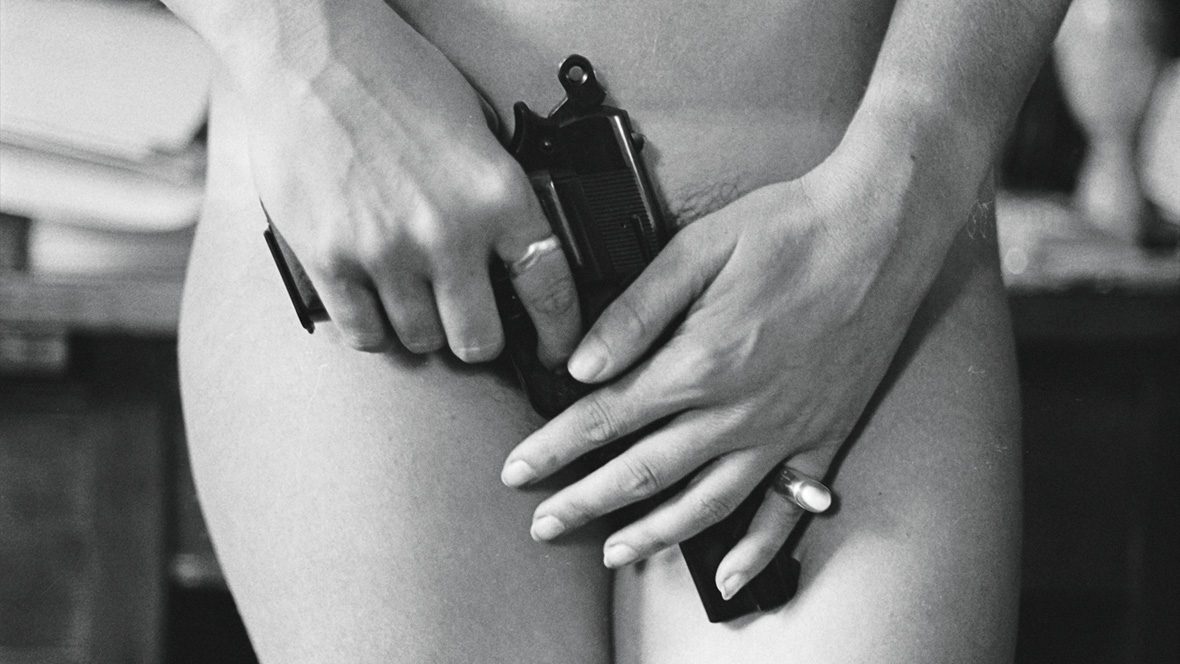
Remake Remodel: Andrew Hale in conversation with Sarah McCrory
Launching September 2018, a Centre for Contemporary Art arrives at Goldsmiths – and a white cube it is not. Director Sarah McCrory is unfazed: she knows plenty about thinking outside the box. Here she outlines the project’s bold vision.
Disused Victorian-era baths and cast-iron water tanks are being transformed to bring contemporary art from around the world to south London. And Sarah McCrory, Director of Goldsmiths’ new Centre for Contemporary Art, is all for it.
Previously Director of Glasgow International 2014 and 2016, McCrory was also Curator of Frieze Projects and Film. In 2012, she curated a programme of major public commissions as part of the London Olympic Festival. For McCrory, thinking beyond the perimeters of standard space to exhibit art is second nature.
With experience as co-curator for not-for- profit Studio Voltaire, curator of project spaces Arts & Jobs and Swallow Street, curator of self-publishing fair Publish and Be Damned, as well as Director of Vilma Gold, she brings a breadth of history in championing spirited voices.
Working with Turner Prize-winning collective Assemble to shape the building, Goldsmiths is set to further catalyse its world-renowned reputation for art practice, offering a new source for artists, students and the public; featuring residencies, the creation of ambitious works and a contribution to new research.
CCA debuts with an exhibition by Mika Rottenberg, who will present new and existing work throughout seven galleries. After that? Refresh your internet browser. McCrory is purposefully avoiding conventional programming formula, keen for CCA to find its own beat.

Alexis Hunter (1948–2014) Approach to Fear: XVII: Masculinisation of Society – exorcise, 1977 10 vintage colour photographs, mounted on 2 panels, Each: 25 x 101 cm (AHU057), Copyright the Estate of the Artist. Courtesy of Richard Saltoun Gallery
Andrew Hale: We’re talking about art outside the white cube in this issue and I know
you have had a lot of experience with that.
Sarah McCrory: Yes. My history as Curator of Frieze Projects and Film – then at Glasgow International as Director – is mostly about how to make art work in difficult and challenging environments. With Frieze, which of course is well known for having rows of white booths, and art that fits in those booths, the point was to challenge that, and to make bigger projects that maybe also explored the idea of an art fair.
AH: I remember feeling that Frieze embraced this questioning of space early on, not as a reaction but as a deliberate part of the fair experience.
SMC: Yes, but its intentions are twofold I think. One position is to benefit and support artists whose work maybe doesn’t fit into a white cube; giving them an opportunity to comment, or criticise what an art fair is, because of course it’s quite problematic as a place to see and buy art. Allowing a critical voice, within its own institutional walls – tent walls in this case! But the flipside is that gallerists pay a lot of money for art fair booths, and what they want, alongside collectors, is for curators and museum directors to attend. So if you make a large-scale project with Pierre Huyghe or Marvin Gaye Chetwynd, it’s actually an incentive for those professionals to attend the fair.
Later at Glasgow International, I commissioned work in swimming pools, fire stations, abandoned museums, and other weird venues, so yes, I’ve done quite a lot in the public realm.
AH: Moving on to your new role at Goldsmiths CCA, I understand the space will sit alone but at the same time be inevitably connected to the university and its rich history and resources. Does that affect your curatorial overview?
SMC: The plan is to have the gallery as a place where we can commission international artists and look outwards, but also look inwards into Goldsmiths and to think about how the programming can include research, and further exploration of artists’ work. Therefore I’m programming some historical shows, as well as new commissions, but also looking at how we tie together the teaching departments and the faculty, the research units, with the students and with the gallery.
So, for the first exhibition with Mika Rottenberg, a lot of the themes you can draw out from her work have real relevance in a university – talking about labour, specifically female labour, and about absurdity and humour in art, and the body politic or representations and body image; lots of those themes translate directly into different departments. I’m also working on a show of an artist and musician who’s no longer with us, but we would like to get someone to work on his archive, so that would be a very direct research project. We hope faculty staff will in time work with us on developing aspects of their teaching that revolves around the artists we’re showing.

Mika Rottenberg, Lips (study #3), 2016 Single channel video installation, mixed media, dimensions variable, courtesy of Andrea Rosen Gallery, New York Photo: Pierre Le Hors
AH: Is there a sense, or is this just my imagination, that as well as cultural breadth and permeability around art production and curating, there now seems to be a renewed focus on art history? I suppose the equivalent in music is musicality – or technical ability. For a long time it wasn’t fashionable to be a “proper” musician – it still comes from punk; the idea of three-chords let’s-write-a-song. And I suppose a lot of the generation that I’ve grown up around were playing down those historical references or foregrounding technique. But of course, secretly everyone was researching things and being incredibly rigorous!
SMC: Well, Goldsmiths is well known for having a really strong relationship with the YBAs, who generally are known for a post-conceptual, punchy, ideas-based practice. I always thought they had a kind of punk attitude to art making and art practice, but were also really based in their own artistic community, which is sort of overlooked now I think – the strength that they had together around artist-run spaces like City Racing.
AH: I agree, I think their community empowerment is sometimes misinterpreted as being much more cynical; only about commercial development, and selling work.
Where do you see Goldsmiths CCA in comparison to other contemporary institutions?
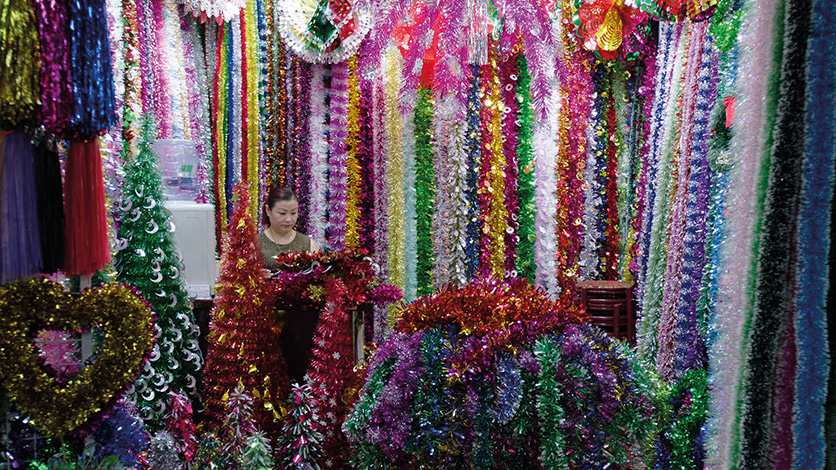
Mika Rottenberg, Cosmic Generator, 2017, (video still), video installation: video, garlands, LED’s, plastic plants, inflatable objects. 26 minutes. Dimensions variable. 6 variants + 1 AP
SMC: I suppose in terms of the space and the relationship with the university, we’re looking out to institutions in universities like Portikus, attached to the Städelschule, and CCA Wattis, attached to CalArts, and The Renaissance Society at the University of Chicago.
AH: There’s a strong international component to your curating, bringing maybe lesser known international artists to the fore. Will that continue here?
SMC: Yes, though I think some of the steer has been quite context-specific. You know, my role at Frieze was to represent international practices in line with the fair. And in Glasgow, being a relatively small city, there is a very international art scene, but at the same time a really strong local artistic community, and it didn’t feel to me being there that it was hugely valuable to only show lots of Glasgow artists to lots of other Glasgow artists. The idea was to try and look at the conversations that could be happening in São Paolo or Berlin, and how the conversation can mirror a conversation that another artist is having in Glasgow. I’m also keen to reflect what’s happening here in the UK and look at lesser-known practices too. I’m making a show of the work of Alexis Hunter, who passed away in 2014. The work I’m showing is quite tough feminist photography from the 1970s, but it has a real sense of humour as well. It feels completely relevant now.
That feminist position, that discourse and that conversation at this moment is so important. The other side of that is her work is often presented almost as story-boards. They have a relevance when thinking about how we consume photographs, through Instagram and through social media, in series and as non-sequiturs.
AH: Going back to the physical gallery spaces here, you took me on a hard-hat tour a few weeks ago and I was amazed by the variety and flexibility.
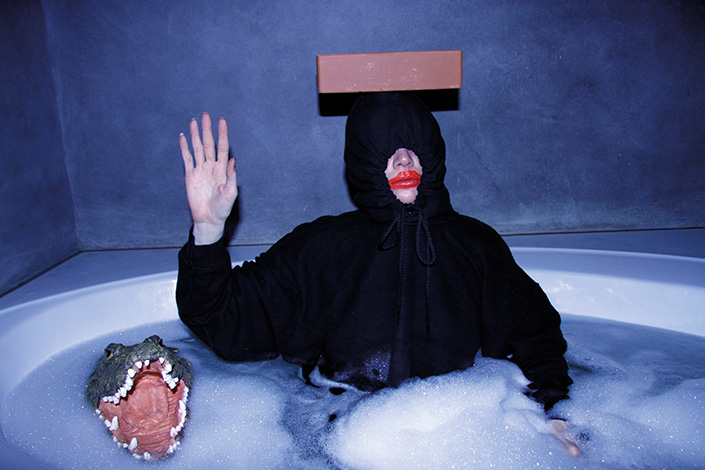
Kris Lemsalu, Portrait Photo credit: Liisa Kivi
SMC: What Assemble have done with the spaces is to make a building with eight galleries of different character. Some spaces are about juxtaposing the look of the building, the raw and the refined, and there are a lot of exposed services which is unusual for a gallery! As well as two white cube spaces, there are two metal tanks which haven’t been clad so the walls are coated iron. The basement galleries are kept as they were originally, very lovely and beautifully worn, London-stock brick.
In short, the spaces are all really unique. And when you approach spaces like that, it’s not really about just hanging work, often it will be a conversation with the artist about treating it like a site-specific commission. All of the spaces we have are actually really manageable in scale. There’s no terrifying behemoth, Turbine Hall-style fear!
AH: But having said that, some of the spaces are quite challenging, and seem purposefully so.
SMC: Yeah, there’s a whole list of things that make the building challenging. For example, working with an artist’s estate; or on a historical show – there’s a duty to the work which makes the build and hang complex. But if you’re working directly with the artist, the problem is shared; you know, you’re co-commissioning in a space. If we work through these things with the artist, we’re throwing up challenges they need to respond to.
The building’s very porous; there are lots of apertures that used to have windows in them that have been left open. So there’s a lot of space for sound bleed, and some of the walls can’t be hung on, because of the material. The whole building is full of complexities but I don’t feel as fazed as doing a show in an old museum in Glasgow with no electricity, light, nothing. I think many artists are really excited by unconventional space.
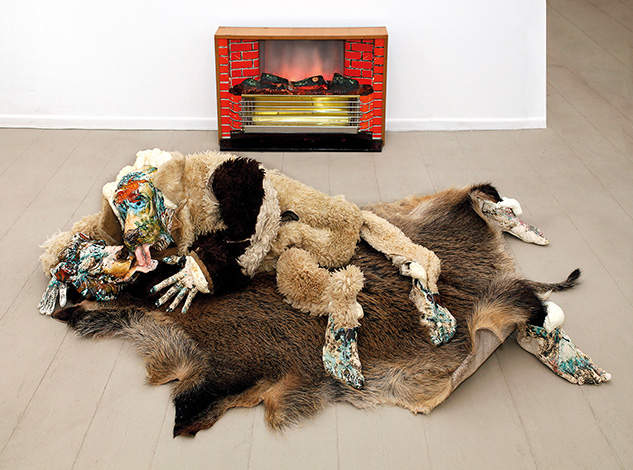
Kris Lemsalu, Father is in town, 2012 Photo credit: Courtesy of the artist and Galerie Tanja Wagner
AH: I was reading today that Frieze have changed their rules at the fair so that technically they will accept a gallery that doesn’t actually have a physical space. Is that a useful thing? I guess the danger is that you could have galleries that choose only to exist through fairs… What do galleries, both commercial and institutional have to think about in these changing conditions?
SMC: I think anyone making exhibitions has to start thinking about how to question and change the structure of how galleries work. There are fixed structures to most galleries – they’ll have three or four major shows a year, or maybe six if they’re a commercial space, and then they slot in a smaller education or talks programme in between. At present I’ve got no real structure, I’m keeping it purposefully inconsistent. At present I’ve got no real structure, I’m keeping it purposefully inconsistent. So a show might be two and a half months, and then the next one might be shorter. I think we should be thinking about everything – from the times galleries open, to, as you say, whether galleries need spaces at all. Or if we should be sharing more resources and support peripatetic institutions and galleries. But the flipside of that is the risk that a gallery becomes just an agency rooted in the market and not supporting artists by exhibiting their work. I think if a gallery doesn’t have a space, it should be for a great reason.
AH: Having been in Glasgow, where it’s a hugely tight-knit community, punching above its weight with art and artists who continue to live and work there, how do you feel about being back in London, which is increasingly unaffordable to artists (or indeed any young person)?
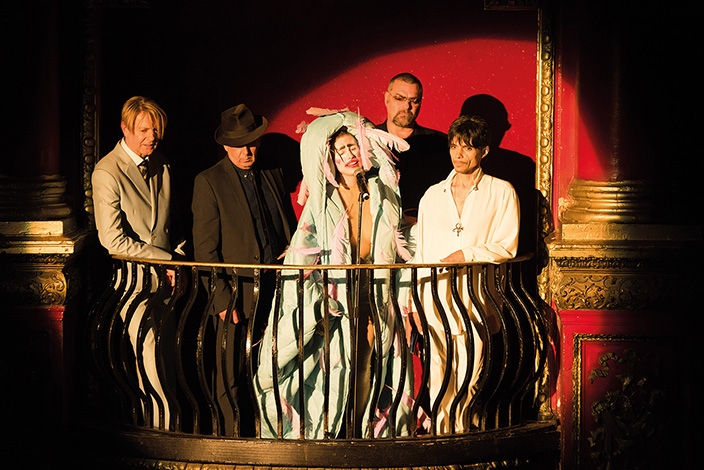
Kris Lemsalu, featuring Glasser and four archangels, In Heaven Everything is Fine, 2017, David Roberts Art Foundation, London, courtesy of the artist, Temnikova & Kasela, Tallinn and Koppe Astner, Glasgow
SMC: I feel amazing about being in London, because I love this city and I still think it continues to be so vibrant and dynamic – sorry, they’re quite bland words, but it still feels exciting to me. However, I am aware I have a salary and can (just about) afford it. Issues of economic inequality aren’t going anywhere and it’s not a rosy picture. I think it’s really important that we think about how we’re going to support artists, and generally those who are worse off in the city. Some councils are waking up to it and starting to think about how they can do that but it’s too little, too late.
Also, after being in Glasgow, I appreciate far more how London-centric the UK is, and this shift is going to be a huge boon to other cities. The UK is so different to other countries where artists are not just in one capital city. The gulf between London and the other cities in the UK is still unfortunately huge. So I hope it develops the artistic communities in Manchester, and Newcastle, and Liverpool. That’s really exciting, isn’t it?
We’ve had conversations here at Goldsmiths about when art students graduate; I had these same conversations in Glasgow – it’s suddenly like the fish leap out of the tiny pond into the sea, and they’re left without much support out there. Could we find buildings and properties to develop studio complexes for graduates, to at least be on a rolling studio-ship? You know, on affordable rent; maybe live-work. I don’t know – I guess it’s still a real estate issue! But it’s one of those things that someone should have thought about 15 years ago, when buildings were more affordable.
AH: Given those changes, do you think you still have enthusiasm for commissioning in the public realm, and working with artists outside the white cube?
SMC: Completely.I hope in the future we can also maybe commission some work in other spaces in the borough or the city, drawing on the legacy of some really successful projects in London – galleries like the Serpentine, the Showroom and Chisenhale to name but a few, that have brought members of the public on board to be involved in the process and to increase access to art outside of the building.


